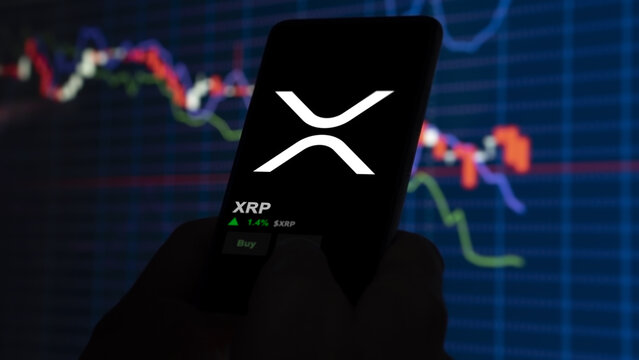Crypto salary packages declined in 2025 despite record-setting year for Bitcoin

Dragonfly released its 2024-2025 Crypto Compensation report. The report displayed that crypto payments have declined across the board this year, despite the Bitcoin price reaching an all-time high of over $126,000.
According to the Dragonfly report, the average compensation reduced for most seniority levels. The report categorized data from 85 companies and over 3,000 roles. Dragonfly noted a “barbell effect” where executive pay saw modest increases while the majority of employees faced reduced pay and token incentives.
The report confirmed that the industry’s overall trend toward stability and long-term risk management is reflected in this change.
Crypto compensation declines amid shifting global pay dynamics
The definitive 24/25 crypto comp benchmarks 👇
* 85 companies & 3.4k+ candidate data points
* Splits by size/stage/funding/type/geo
* YoY industry trends and dataWhat’s inside (1/3):
— Salary/equity/token ranges + benchmarking tool
— Founder compensation— Zackary Skelly (@zorkary) October 9, 2025
Dragonfly’s report revealed that the cryptocurrency compensation market is in decline and that pay practices are still immature when compared to more established industries. The capital firm mentioned that hiring slowed with an average of 3.8 weeks and four interview rounds per business. The report also revealed that offer acceptance rates ranged around 68%, often due to concerns about pay.
U.S. companies led in cash compensation, while international teams closed the gap with greater stock and token packages. According to the report, equity changed unevenly, particularly for non-executive and non-technical positions. International cases occasionally reached 2–10× U.S. levels, whereas the U.S. observed declining ranges (compression).
International PM equity ranged from 2 to 10 times U.S. levels, while product management executives reported the highest salaries, ranging from $390,000 to $484,000, matching or surpassing engineering in total compensation.
Dragonfly’s report acknowledged that developer relations became the most “borderless” function, with near-identical global compensation bands and small deltas at the CEO level (internationally led tokens versus U.S.-led equity/total compensation). The capital firm stated that developer relations emerged as the most “borderless” function.
The report showed that engineering roles comprise approximately two-thirds of the crypto workforce. According to the report, the engineering sector experienced changes, including international engineering executives earning more than their U.S. counterparts, with total compensation ranging from $530,000 to $780,000.
Token packages drove the earnings up to 3%. The global crypto investment firm also reported that later-stage firms looked to Eastern Europe, where 63% of companies hired cost-effective engineering talent.
Dragonfly also accounted that engineering roles accounted for 67% of the total crypto headcount across company sizes and funding tiers. Only 10% of jobs were entry-level, and the combined percentage of product and marketing teams was still low at less than 20%.
Remote work reshapes global hiring and compensation.
The remote work statistics display that only 2% of companies maintain traditional in-office setups. Blockchain-focused investment firm added that more than half of all companies operate entirely remotely. Hybrid models combined limited in-office requirements with remote flexibility.
The report displayed a 54% remote acceptance rate among smaller teams with 1 to 5 workers and an 83% rate among larger companies with more than 100 employees. Among the surveyed crypto companies, remote work also became more common by the Series B round, with 73% of teams operating entirely remotely.
Dragonfly’s report confirmed that 94% of enterprises have no plans to change their work policies. The lack of change in work policies showed a long-term shift away from reliance on offices. International teams preferred hybrid structures at 35%, while U.S. enterprises tended to be more remote at 55%.
In Western Europe, 84% of companies between Series B and E employed staff in the region. According to the Dragonfly report, Canada drew 38% of Series B-E firms as a geographic and regulatory hedge. Asia’s participation nearly quadrupled year-on-year, increasing from 20% to 41%.
Outliers, including Africa, showed a 4% growth, Oceania displayed 2%, and India revealed 9%, as well as South America at 13%, all of which showed relatively modest growth.
Don’t just read crypto news. Understand it. Subscribe to our newsletter. It's free.
Crypto salary packages declined in 2025 despite record-setting year for Bitcoin

Dragonfly released its 2024-2025 Crypto Compensation report. The report displayed that crypto payments have declined across the board this year, despite the Bitcoin price reaching an all-time high of over $126,000.
According to the Dragonfly report, the average compensation reduced for most seniority levels. The report categorized data from 85 companies and over 3,000 roles. Dragonfly noted a “barbell effect” where executive pay saw modest increases while the majority of employees faced reduced pay and token incentives.
The report confirmed that the industry’s overall trend toward stability and long-term risk management is reflected in this change.
Crypto compensation declines amid shifting global pay dynamics
The definitive 24/25 crypto comp benchmarks 👇
* 85 companies & 3.4k+ candidate data points
* Splits by size/stage/funding/type/geo
* YoY industry trends and dataWhat’s inside (1/3):
— Salary/equity/token ranges + benchmarking tool
— Founder compensation— Zackary Skelly (@zorkary) October 9, 2025
Dragonfly’s report revealed that the cryptocurrency compensation market is in decline and that pay practices are still immature when compared to more established industries. The capital firm mentioned that hiring slowed with an average of 3.8 weeks and four interview rounds per business. The report also revealed that offer acceptance rates ranged around 68%, often due to concerns about pay.
U.S. companies led in cash compensation, while international teams closed the gap with greater stock and token packages. According to the report, equity changed unevenly, particularly for non-executive and non-technical positions. International cases occasionally reached 2–10× U.S. levels, whereas the U.S. observed declining ranges (compression).
International PM equity ranged from 2 to 10 times U.S. levels, while product management executives reported the highest salaries, ranging from $390,000 to $484,000, matching or surpassing engineering in total compensation.
Dragonfly’s report acknowledged that developer relations became the most “borderless” function, with near-identical global compensation bands and small deltas at the CEO level (internationally led tokens versus U.S.-led equity/total compensation). The capital firm stated that developer relations emerged as the most “borderless” function.
The report showed that engineering roles comprise approximately two-thirds of the crypto workforce. According to the report, the engineering sector experienced changes, including international engineering executives earning more than their U.S. counterparts, with total compensation ranging from $530,000 to $780,000.
Token packages drove the earnings up to 3%. The global crypto investment firm also reported that later-stage firms looked to Eastern Europe, where 63% of companies hired cost-effective engineering talent.
Dragonfly also accounted that engineering roles accounted for 67% of the total crypto headcount across company sizes and funding tiers. Only 10% of jobs were entry-level, and the combined percentage of product and marketing teams was still low at less than 20%.
Remote work reshapes global hiring and compensation.
The remote work statistics display that only 2% of companies maintain traditional in-office setups. Blockchain-focused investment firm added that more than half of all companies operate entirely remotely. Hybrid models combined limited in-office requirements with remote flexibility.
The report displayed a 54% remote acceptance rate among smaller teams with 1 to 5 workers and an 83% rate among larger companies with more than 100 employees. Among the surveyed crypto companies, remote work also became more common by the Series B round, with 73% of teams operating entirely remotely.
Dragonfly’s report confirmed that 94% of enterprises have no plans to change their work policies. The lack of change in work policies showed a long-term shift away from reliance on offices. International teams preferred hybrid structures at 35%, while U.S. enterprises tended to be more remote at 55%.
In Western Europe, 84% of companies between Series B and E employed staff in the region. According to the Dragonfly report, Canada drew 38% of Series B-E firms as a geographic and regulatory hedge. Asia’s participation nearly quadrupled year-on-year, increasing from 20% to 41%.
Outliers, including Africa, showed a 4% growth, Oceania displayed 2%, and India revealed 9%, as well as South America at 13%, all of which showed relatively modest growth.
Don’t just read crypto news. Understand it. Subscribe to our newsletter. It's free.

